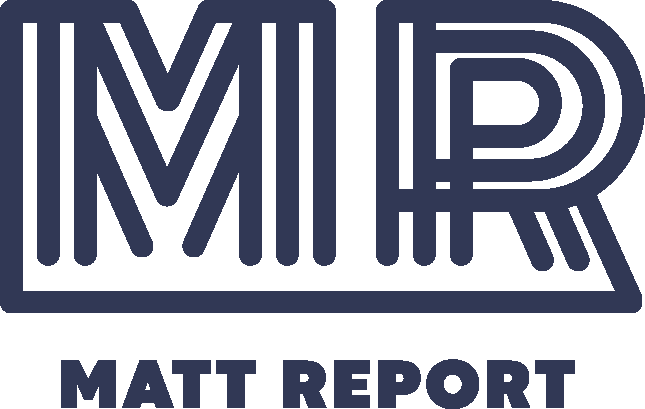The #1 question I get when consulting other WordPress entrepreneurs is, “How do you sell WordPress websites and not label yourself a developer or designer?”
The quick answer is, “because my role is to squash the the unknown fear for my client.”
The longer answer is, I pitch support, incorporate technology, I base projects on value, and most importantly I have a team of folks who do an amazing job putting the pieces of the puzzle together.
If you’re pitching potential clients website design like the rest of the internet, best you direct them to 99designs.com right now.
You’re selling it wrong
Throughout my career, I’ve cobbled together many types of client/lead/prospect profiles.
In fact, I have a profile list I fit each potential lead into before engaging them with a sales phase. I’ll write more about that later, but in this example I’m selecting “The average Joe.”
I bet you already know who this person is…
- They own a pizza shop
- A plumber
- A doggie day care
Someone who just needs a website to validate their business existence. They call you up and ask — “How much does it cost?”
Already you should know that this isn’t someone that has done this before. They don’t understand our practice, they don’t know how to get their hub online and quite frankly they’re a bit scared.
It’s the “unknown fear.”
Unknown fear
The unknown fear is three parts.
The unknown, the fear and the unknown fear.
The unknown
If the client knew what to do, they would be on 99designs, SquareSpace or WordPress.com by now. Perhaps they were and they were overwhelmed with what they were presented with. It’s our job to squash that overwhelming unknown.
What is this Wide World of Webs all about?
Immediately you spring into action and explain:
- WordPress.com vs WordPress.org
- Opensource & community
- Themes vs Plugins
- Backups, security and patches
- Scale and Content delivery networks
- E-commerce, lead generation and content curation
Holy shit.
Now the fear sets in…
The fear
The client, having never gone through this process, immediately starts to weep.
What is all this stuff she’s talking about?I thought this was like the Yellowpages where I just paste an ad somewhere — isn’t it that easy?
You reassure them, “it’s not THAT bad and once we get your content marketing going, we’ll funnel the leads into your weekly newsletter!”
What the client hears:
- This is going to be difficult
- What are all these terms?
- I need to do more than just put up a website?
- Is she just trying to sell me something else?
That last one could be the killer in the deal. Enter the unknown fear…
The unknown fear
This effects both of you.
Somewhere at the end of the fear phase, your negotiations start ending with my favorite phrase “and we’ll take it from there.”
You know exactly what I’m talking about. This is where both of you are scared of what comes next — or as I call it, the unknown fear.
The client
- How much is this going to cost me?
- How long is this going to take?
- What’s going to come next?
- What if they steer me in the wrong direction?
- I don’t think I can handle all of this.
You
- I hope they can afford this.
- How long is this going to take?
- How can I lock this into recurring revenue?
- This one is going to be tough, but I can do it!
The unknown fear will always exist, the question becomes at what severity. The best unkown fear for the client is not knowing how to handle all of this new stuff you’re delivering.
This will open up the doors to a partnership and long term engagement that should be healthy for both of you.
Selling it right
What we need to do is break down the engagement into bite size chunks.
Don’t just vomit out a bunch of keywords and send someone your proposal hoping they overnight you a check.
Squash the unknown fear.

1. Use the almighty metaphor
For the “average Joe” client profile, I like to use a metaphor of building a house when talking about a new web project.
What do you see above?
I see a plot of land.
- Is this where you want to build your house?
- What kind of house will go here?
- How will you access it?
- What type of neighbors will you have?
We’re settling that disturbing feeling of the unknown.
2. Schedule a firm pre-sales/pre-discovery discussion
This is a simple strategy that ultimately sets the tone of a particular engagement.
Ask the client to arrange a meeting of 30 – 45 minutes max via phone, Skype or in person (if it’s logistically possible.)
On this call you will gather data about the project, the goals and more importantly the profile of your client. It’s a great way to understand who this person is and what type of relationship you can expect moving forward.
It will also squash the fear they have about working with you and budget requirements. By now, they should realize you’re not just an order taker.
3. Close it up
ABC — always be closing.
If this process is new for you, get a couple first round meetings under your belt to get comfortable. By the end of the call, I’d be qualifying budget requirements right away.
“This sounds like a $5k project, are you good with this?”
“Obviously this is a project you’re willing to invest in given the requirements. We’re looking at 3 month build out and ongoing launch support.”
I’m in the mindset of getting straight to the point. You both have numbers in your head — let’s just get there and make an excellent product.
In part 2
In the next part, we’ll talk about the discovery phase and how we can continue to squash the unknown for our client.
What do you think about Part 1? Share your thoughts and advice below.
On data and profiling — a great watch
[ted id=1833]
Like this stuff? Subscribe to the newsletter!


Leave a Reply